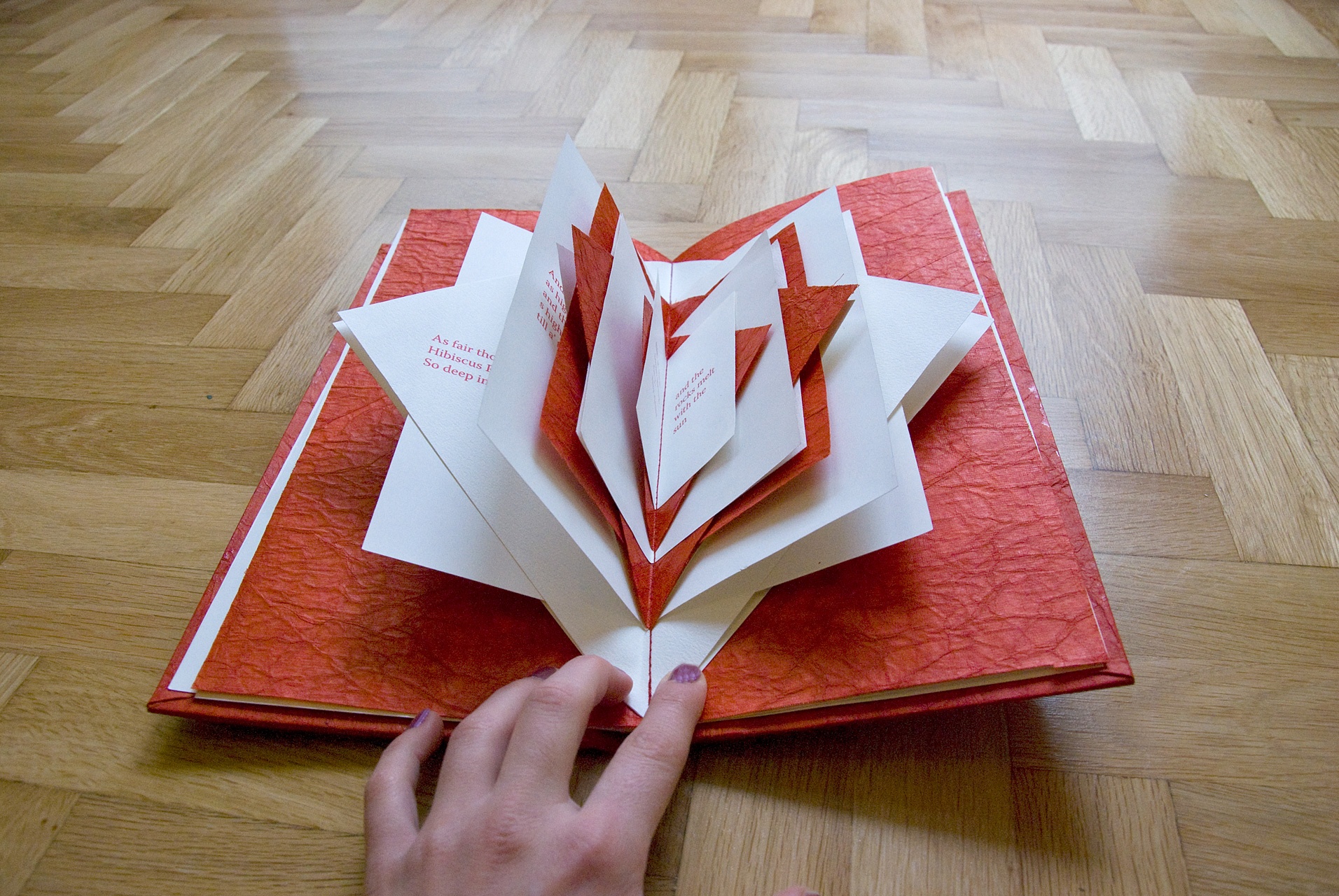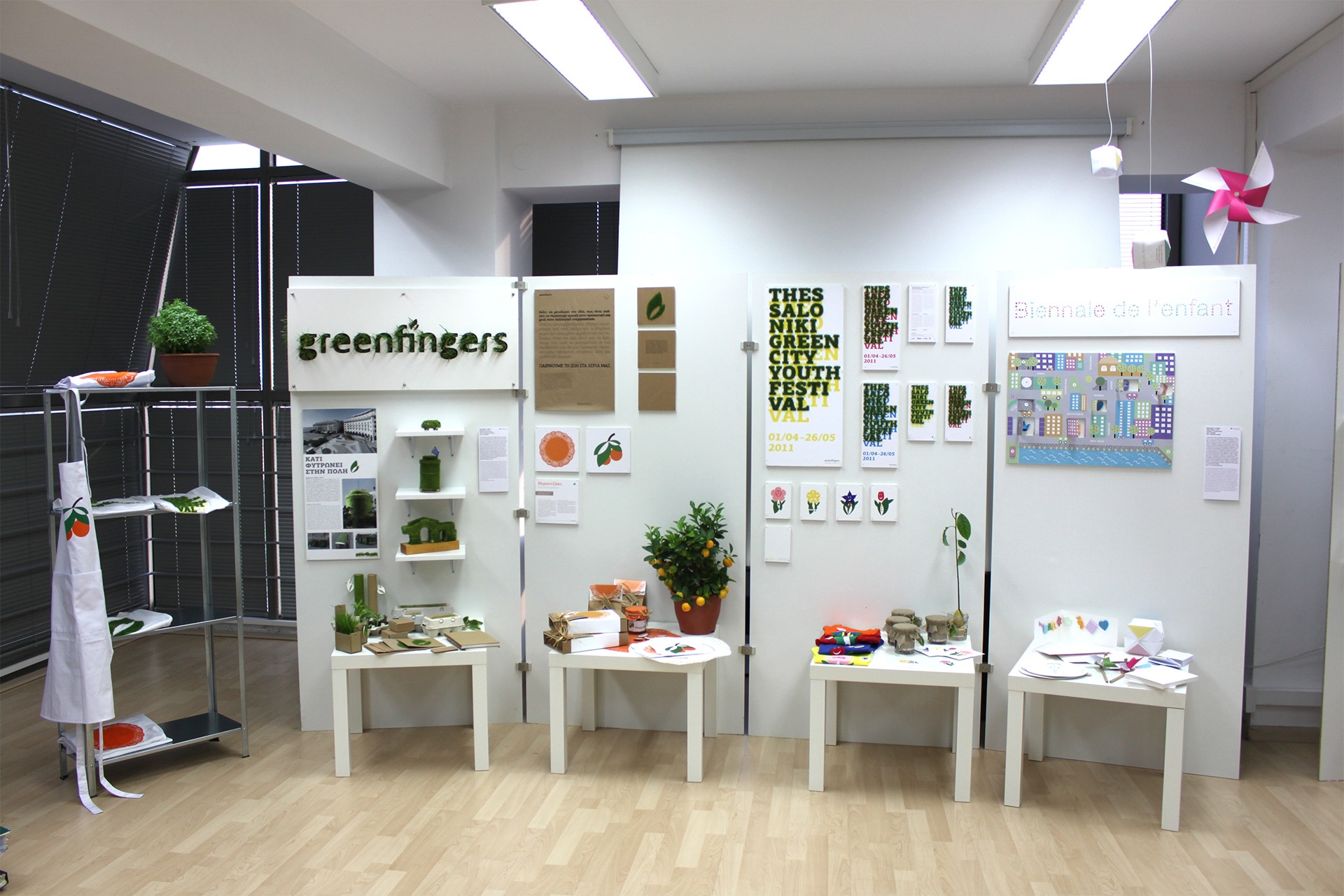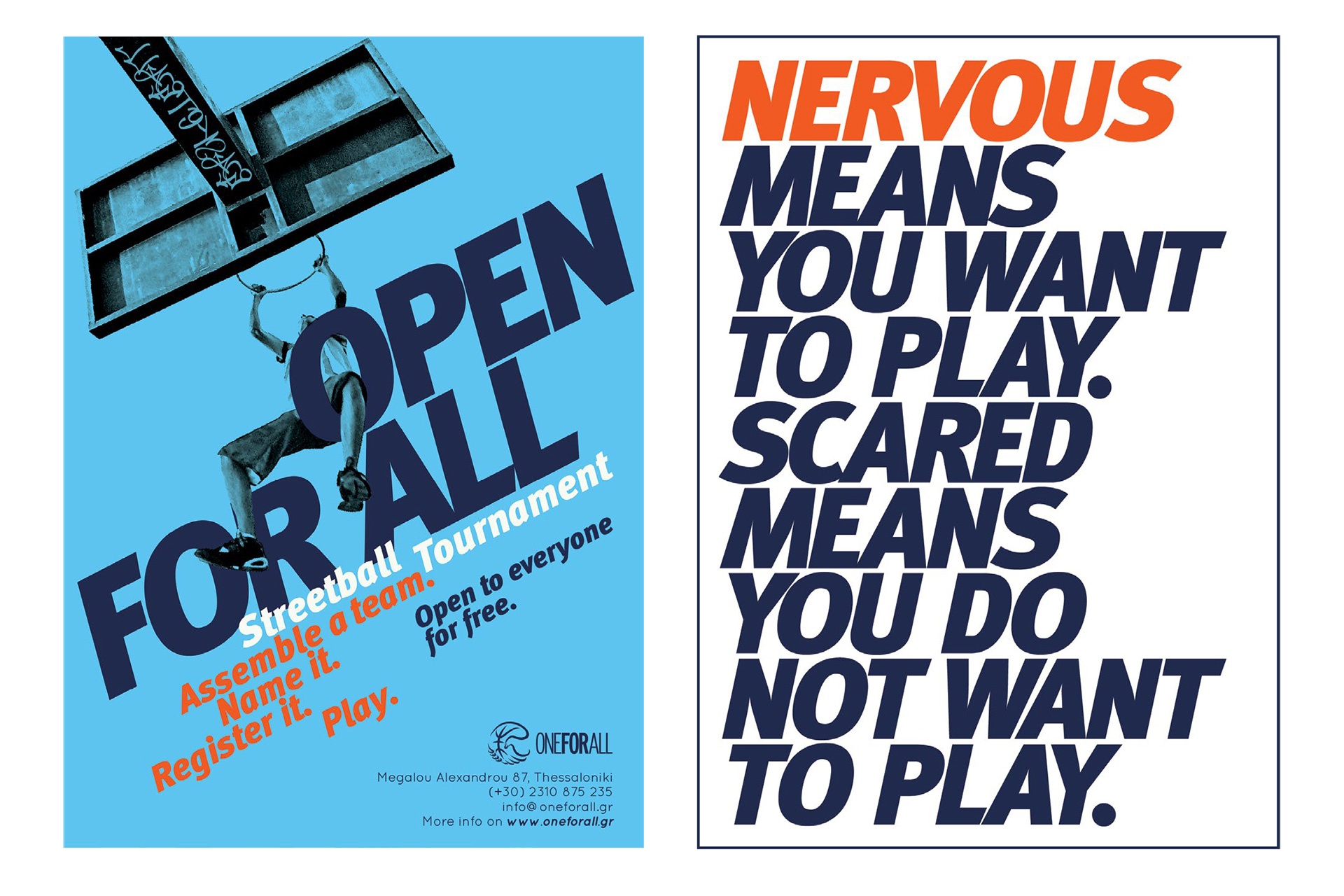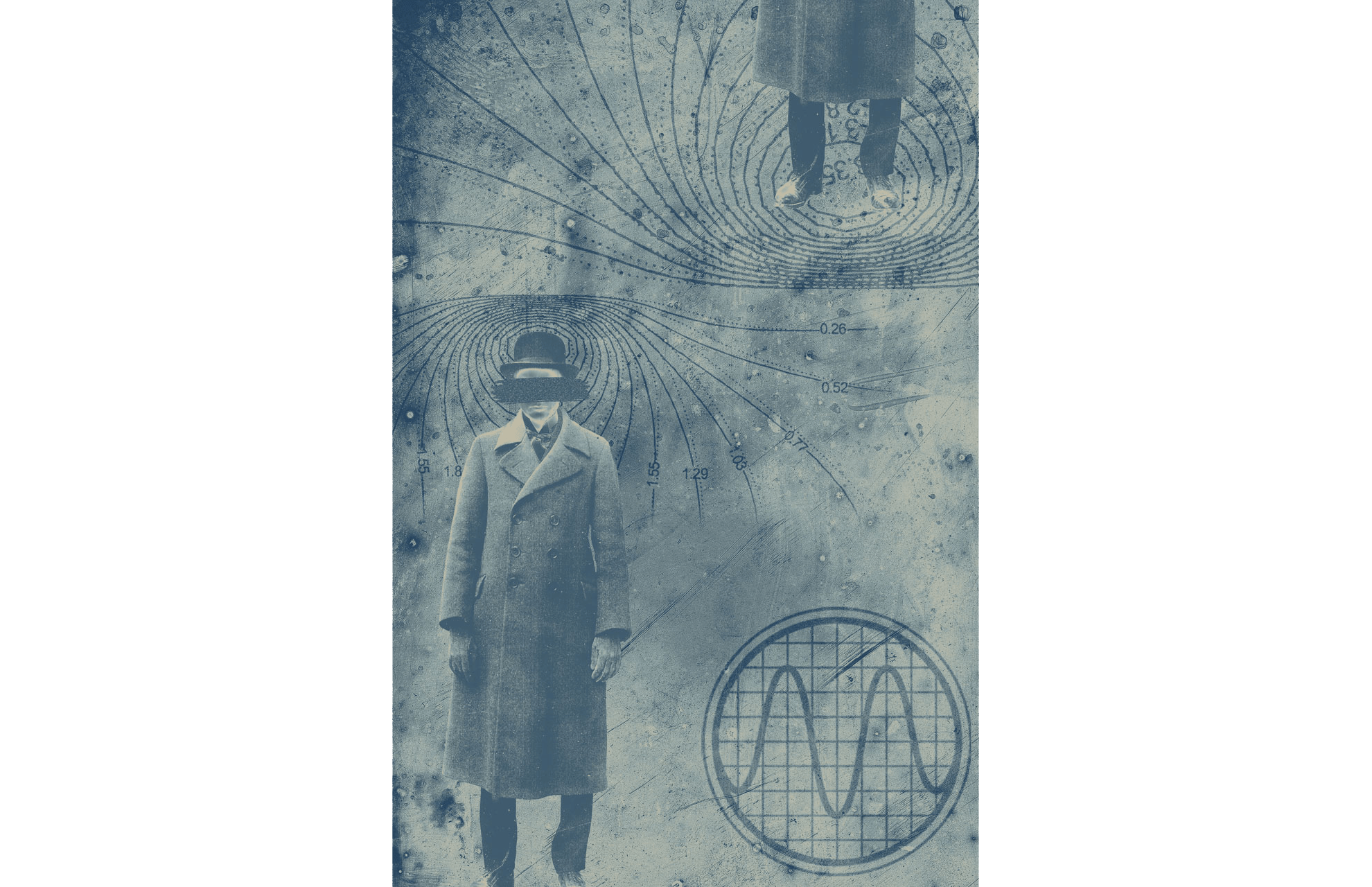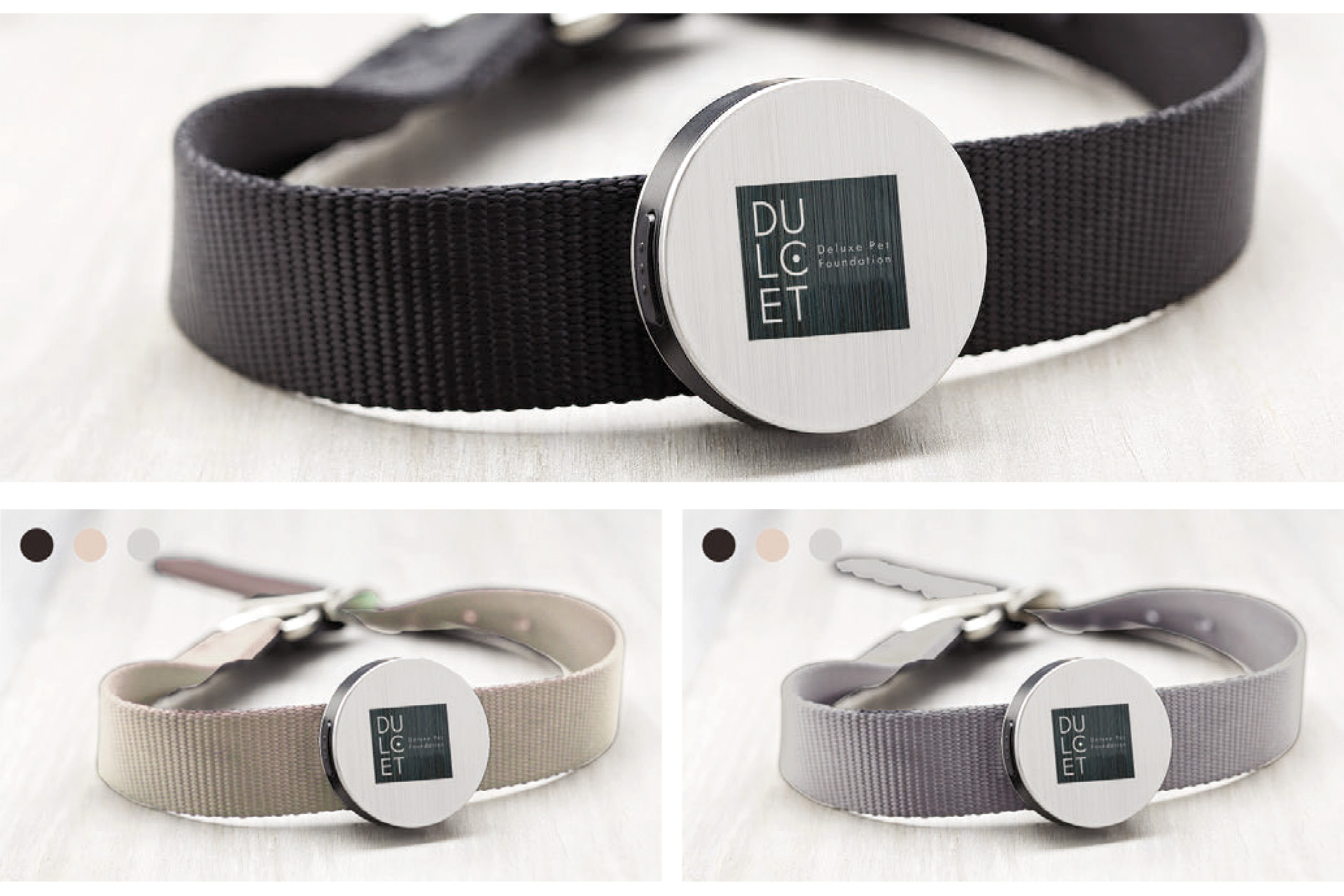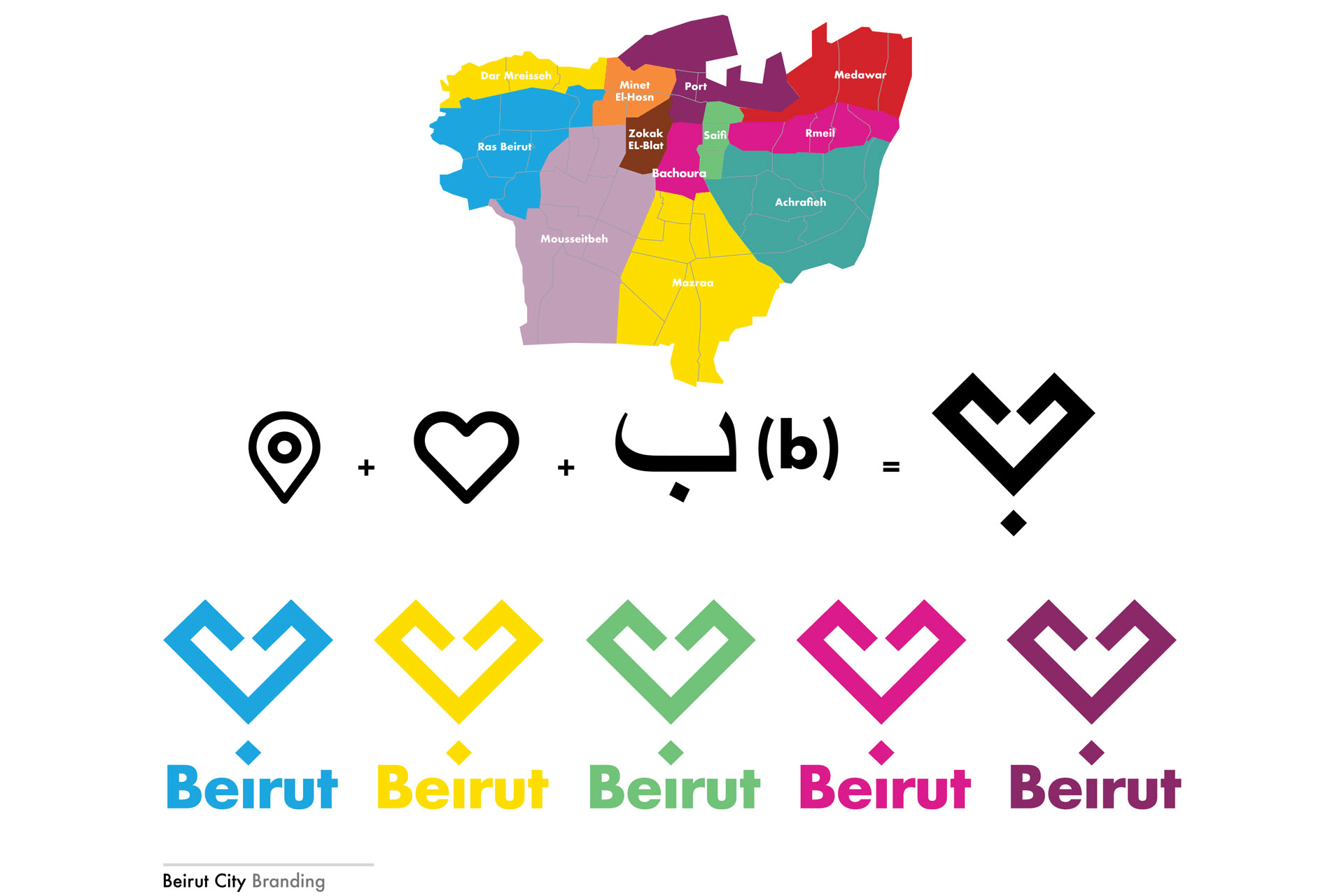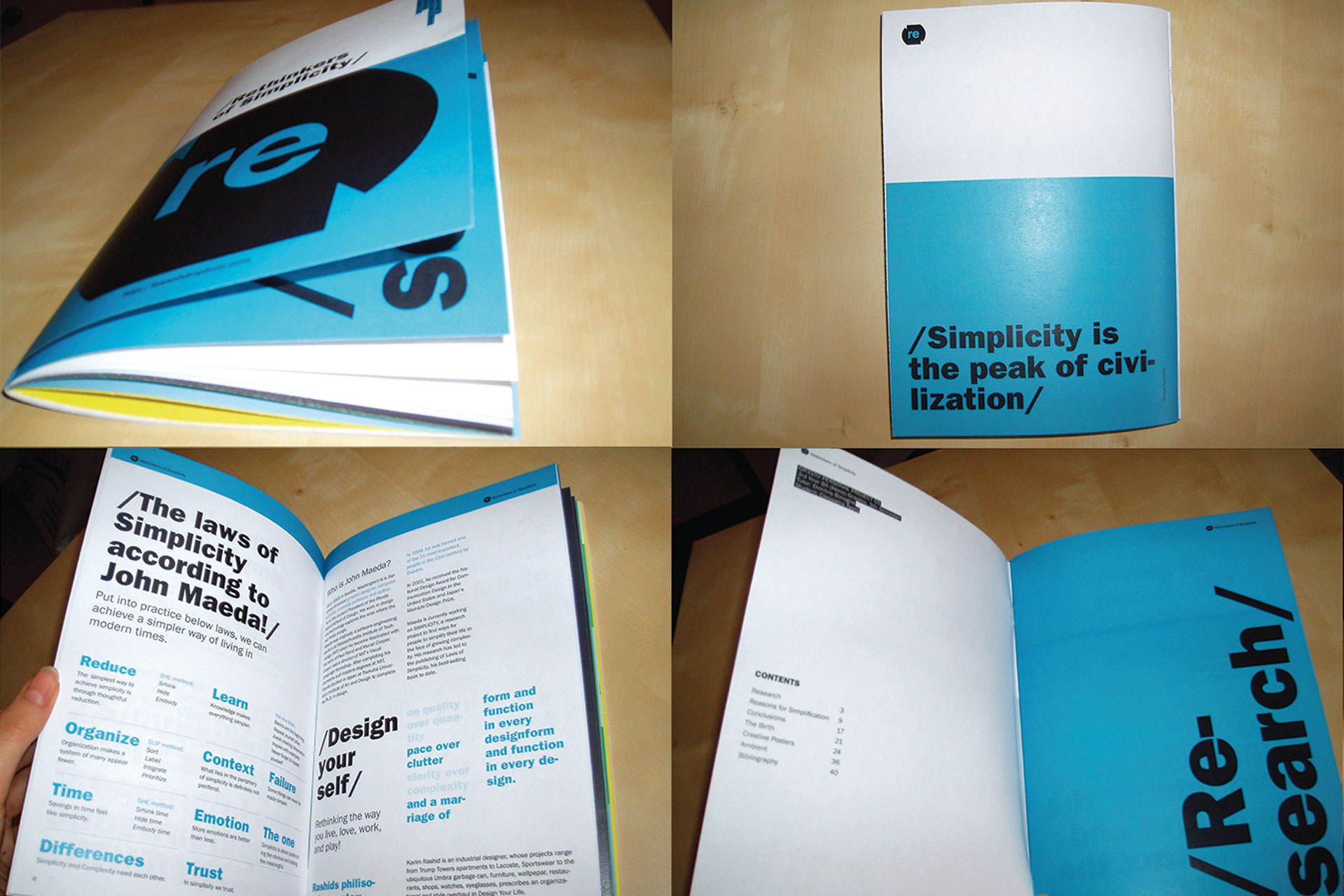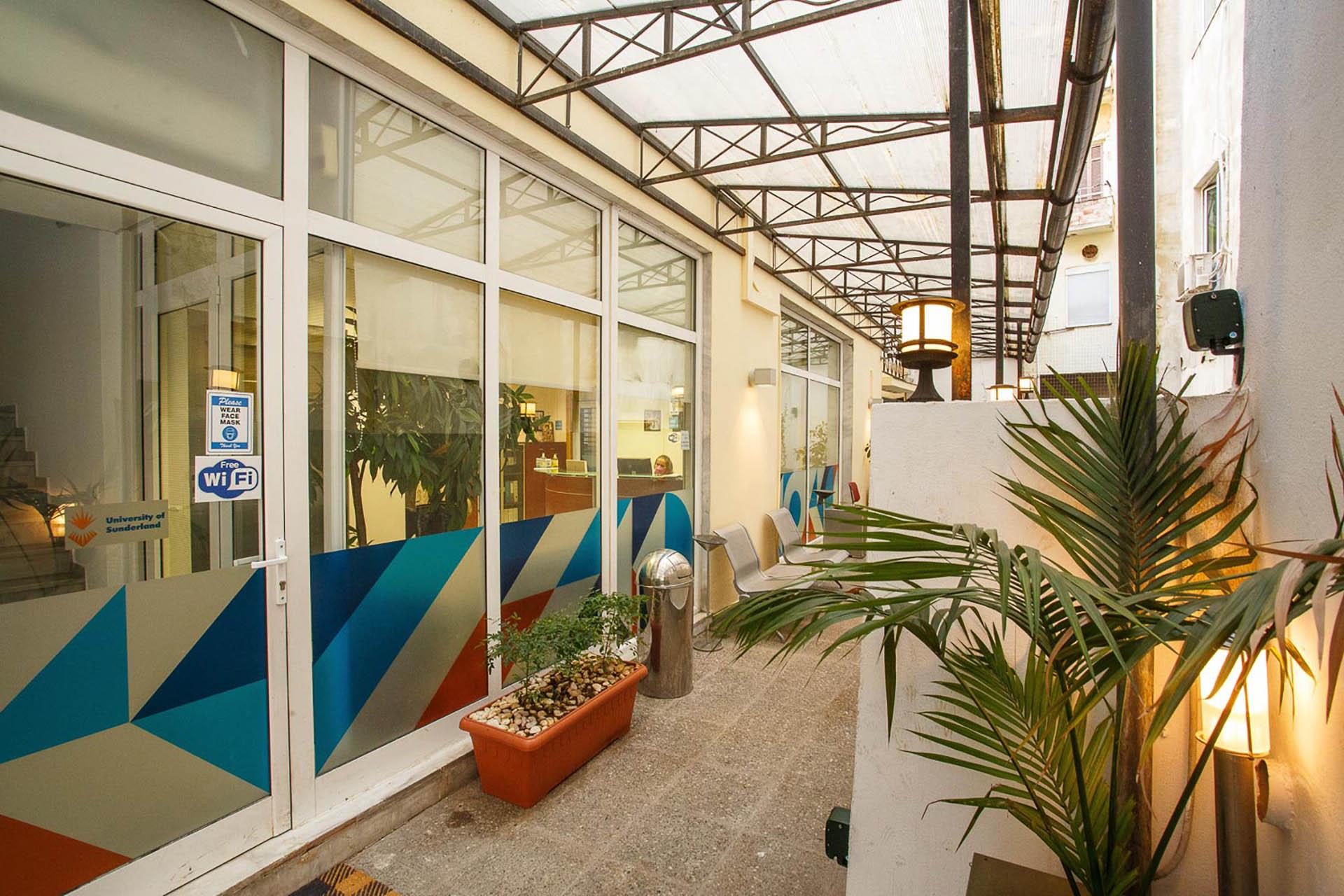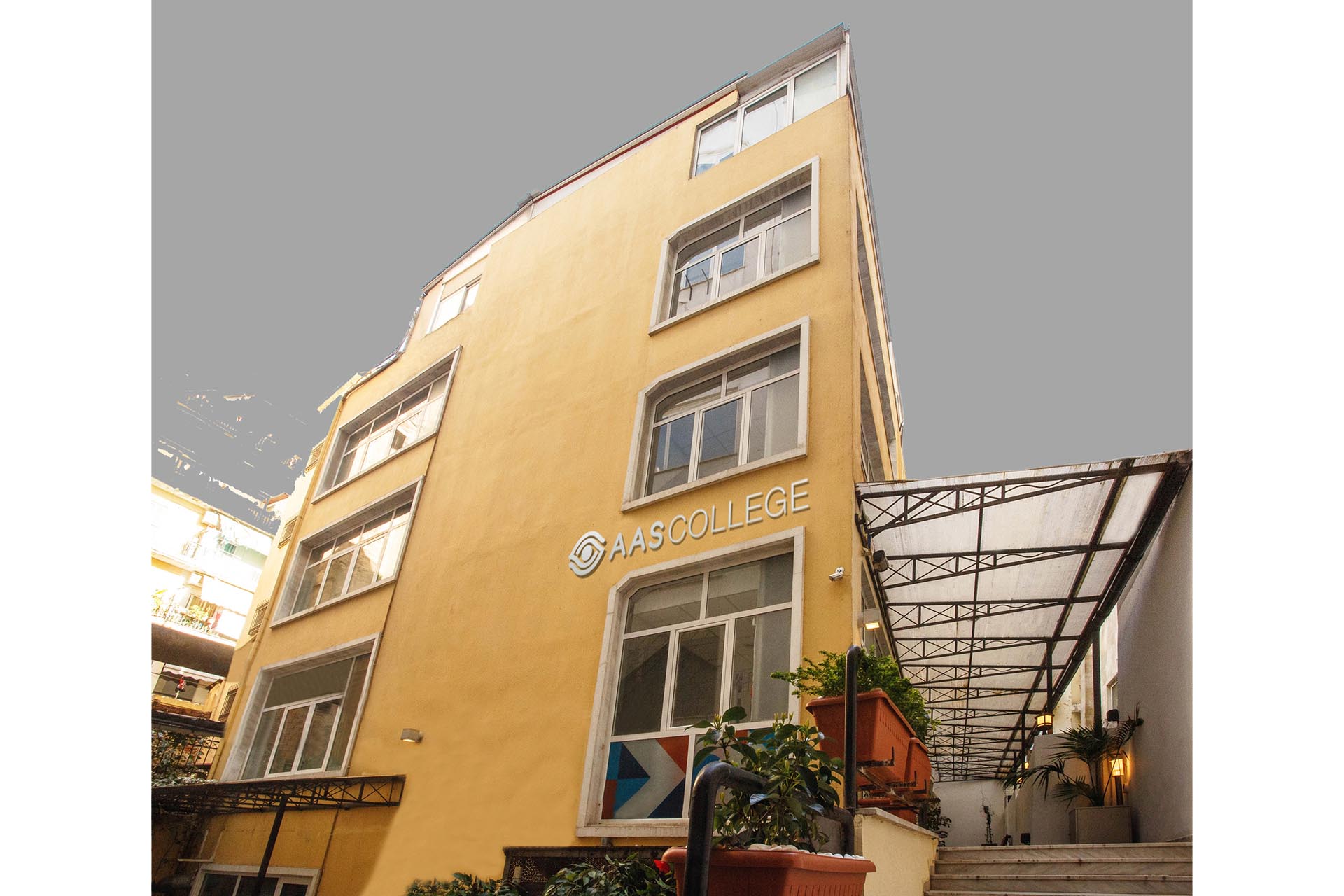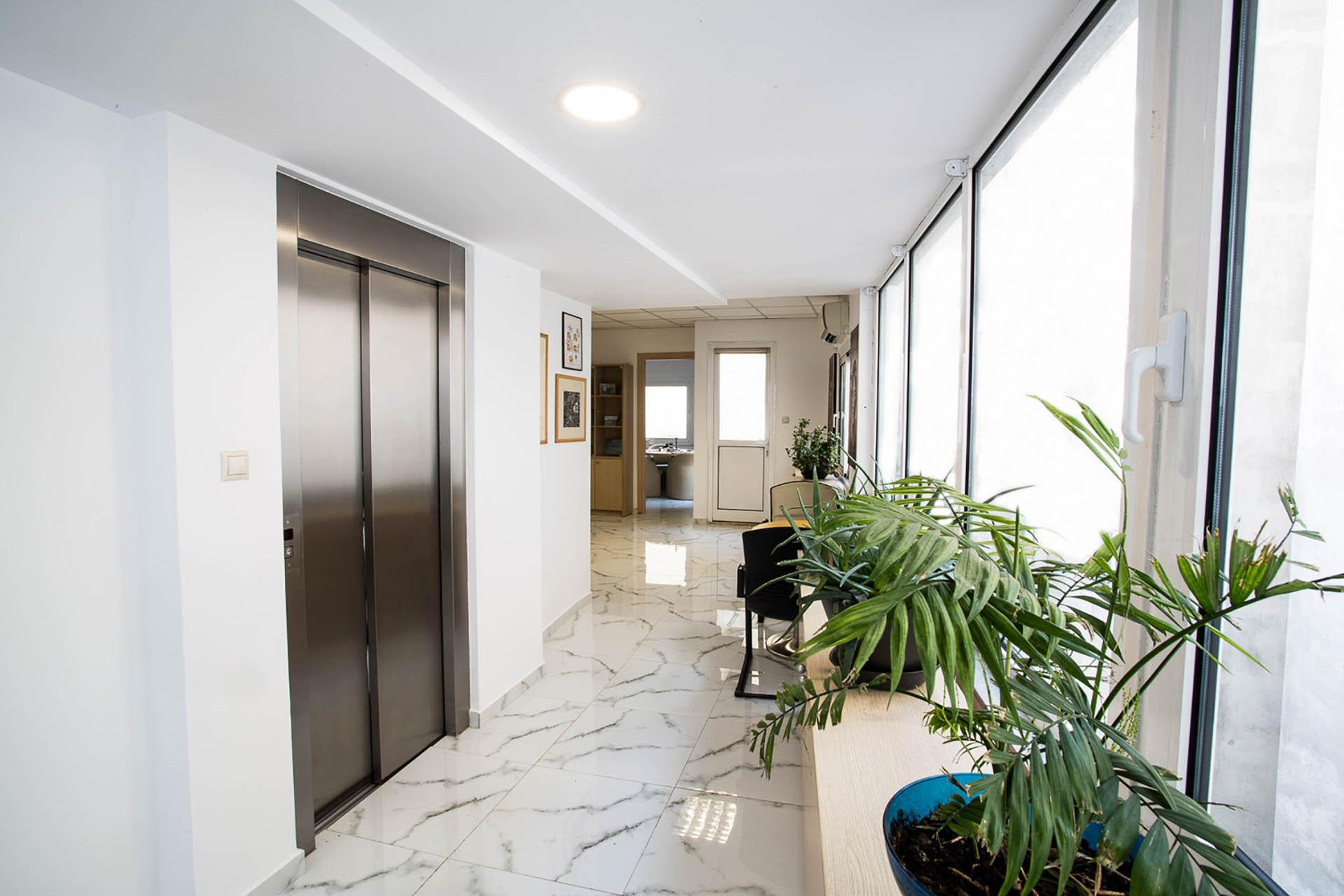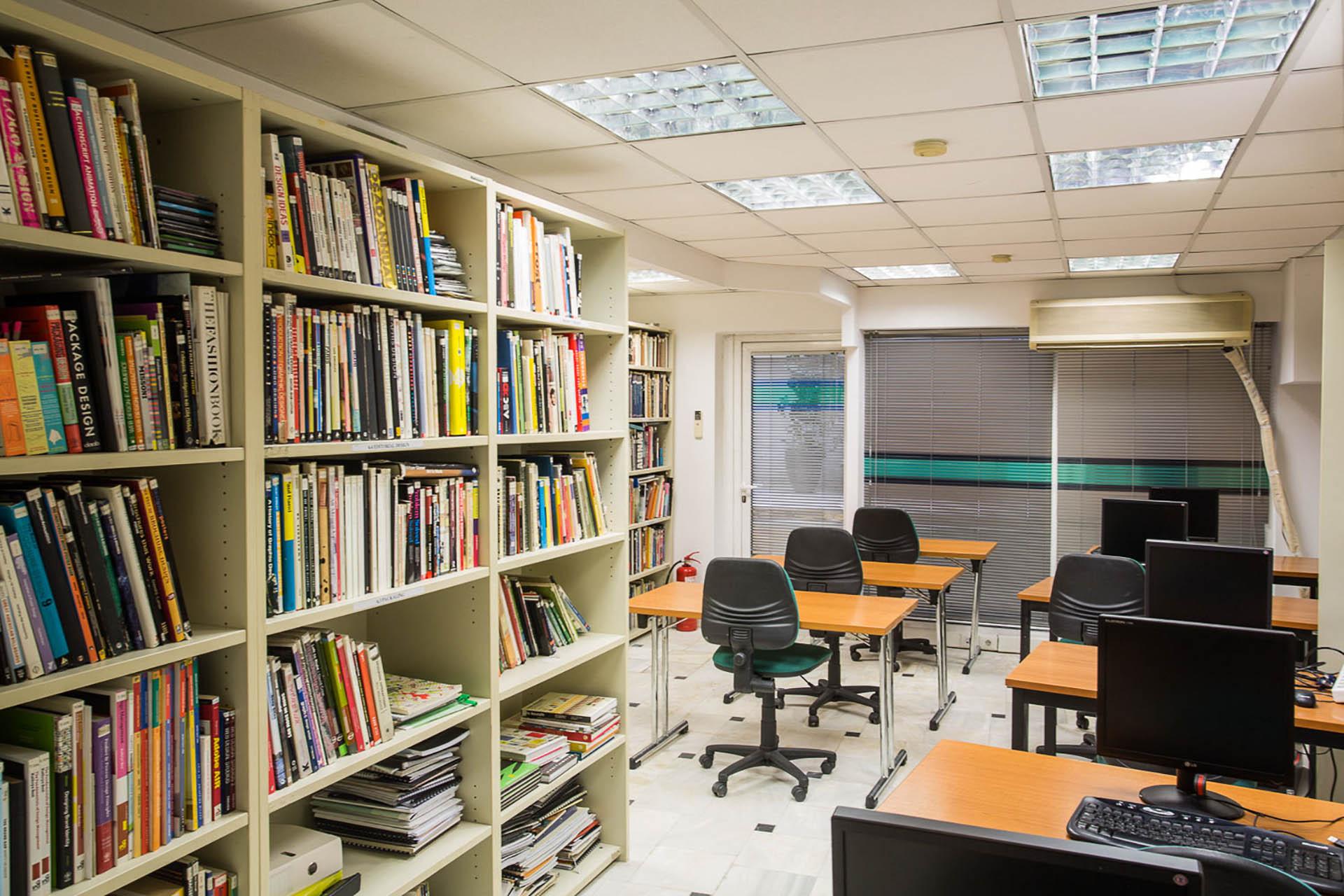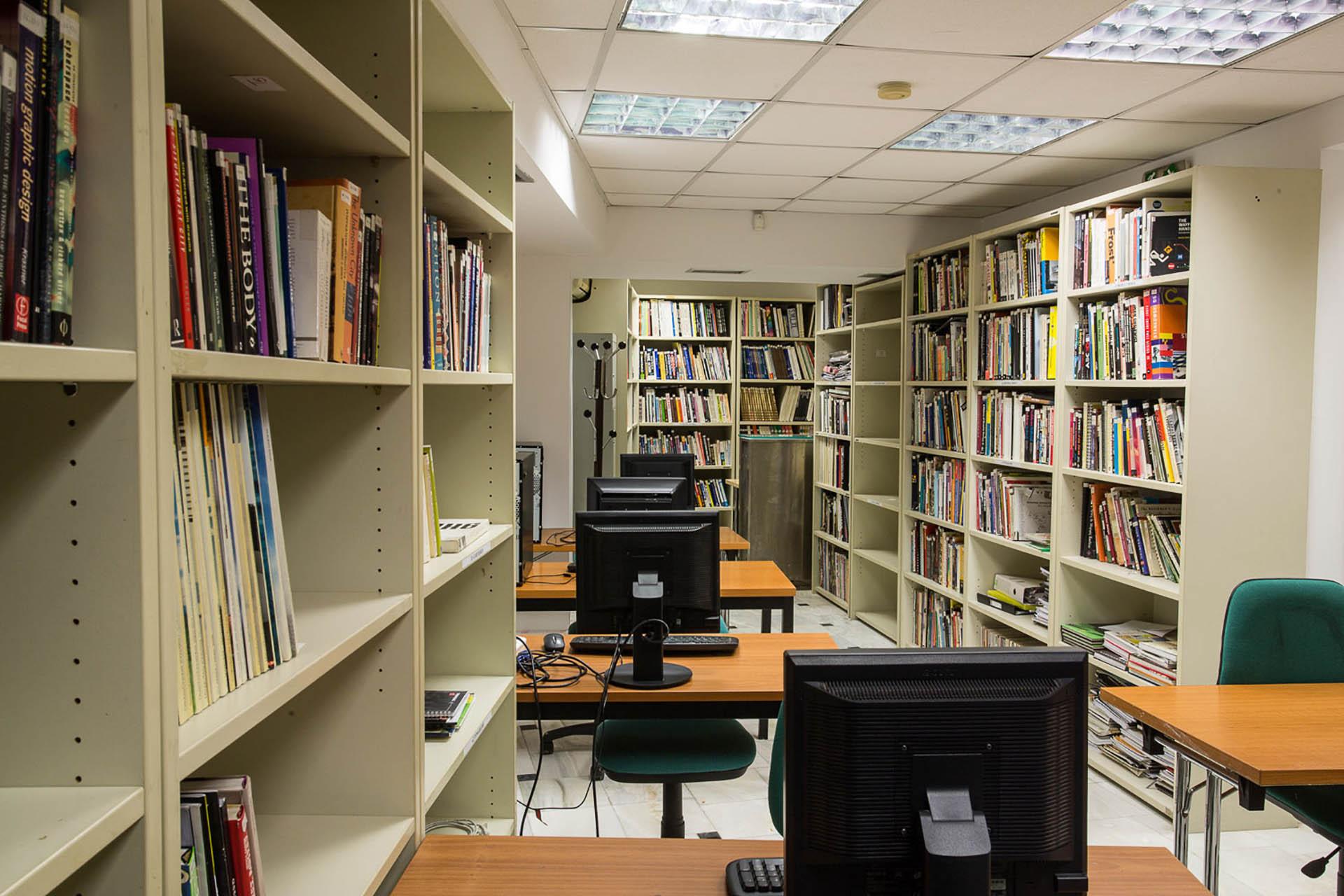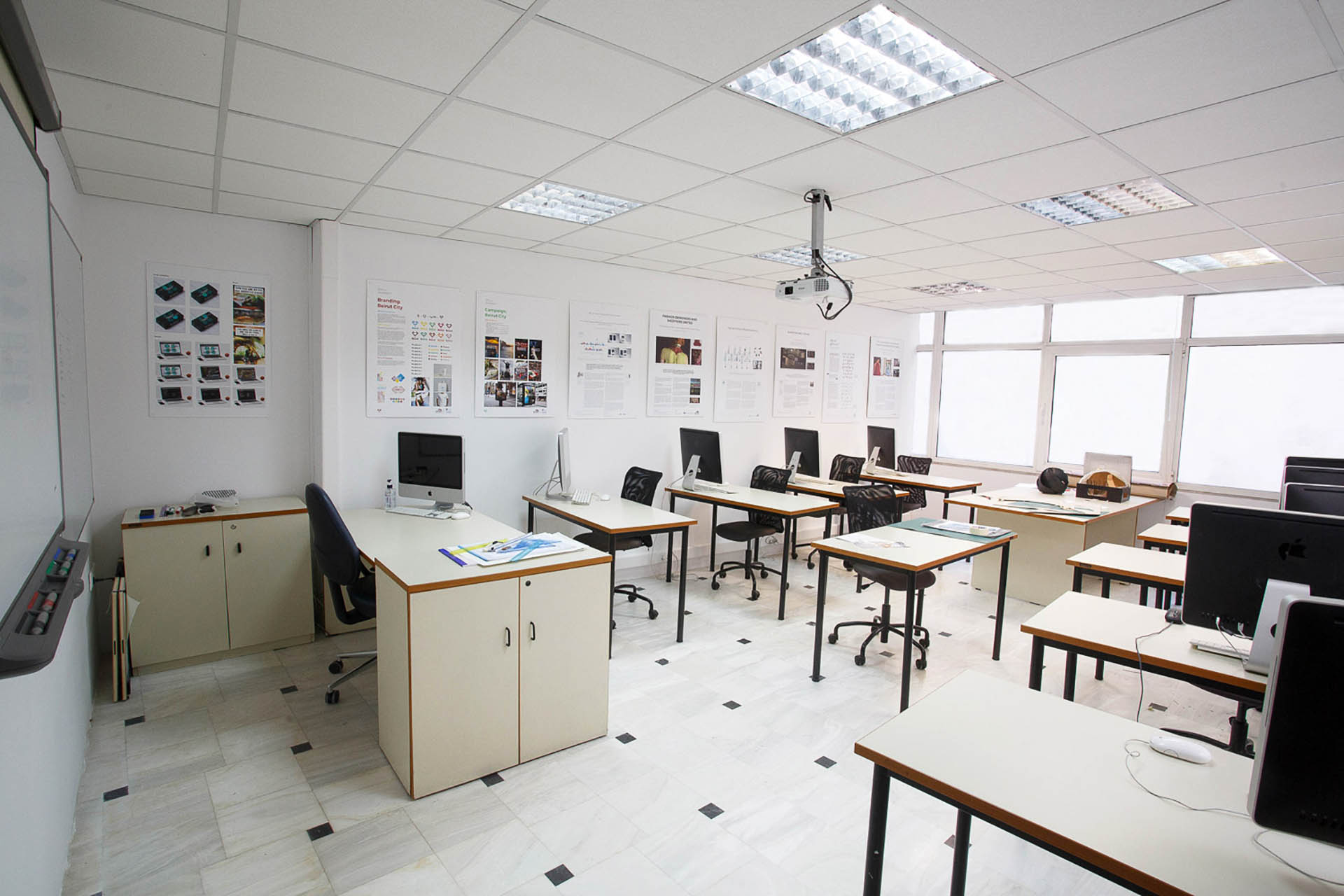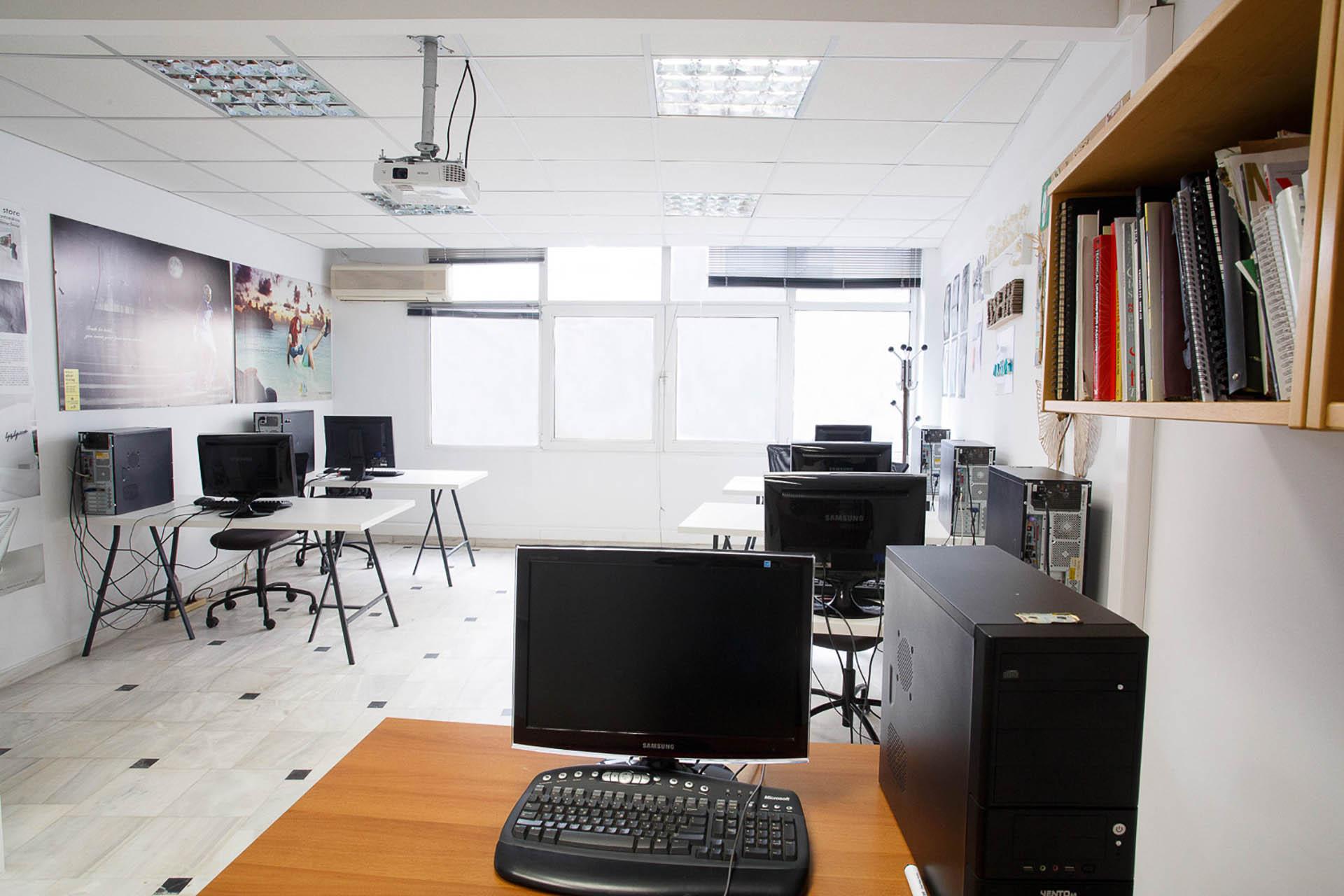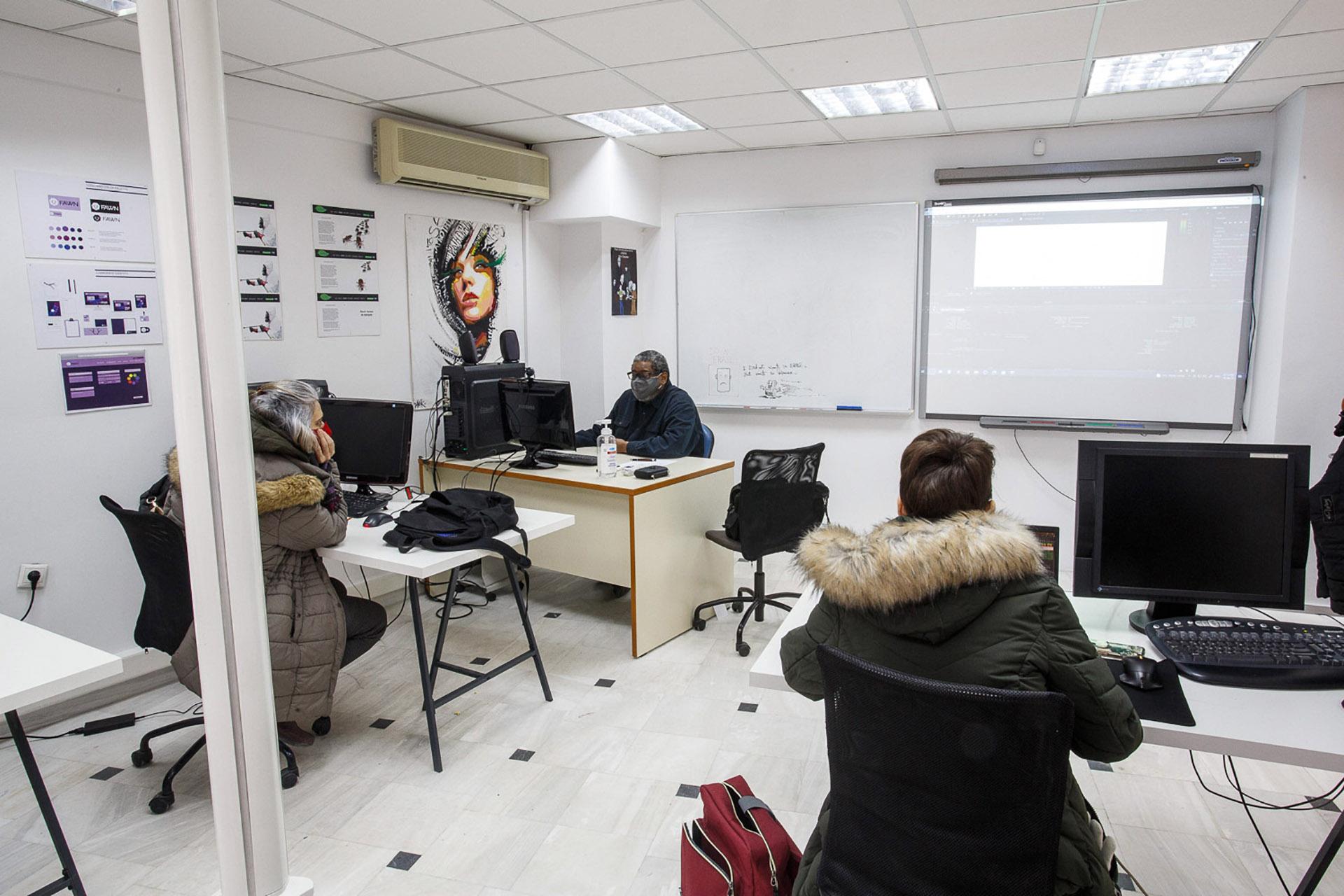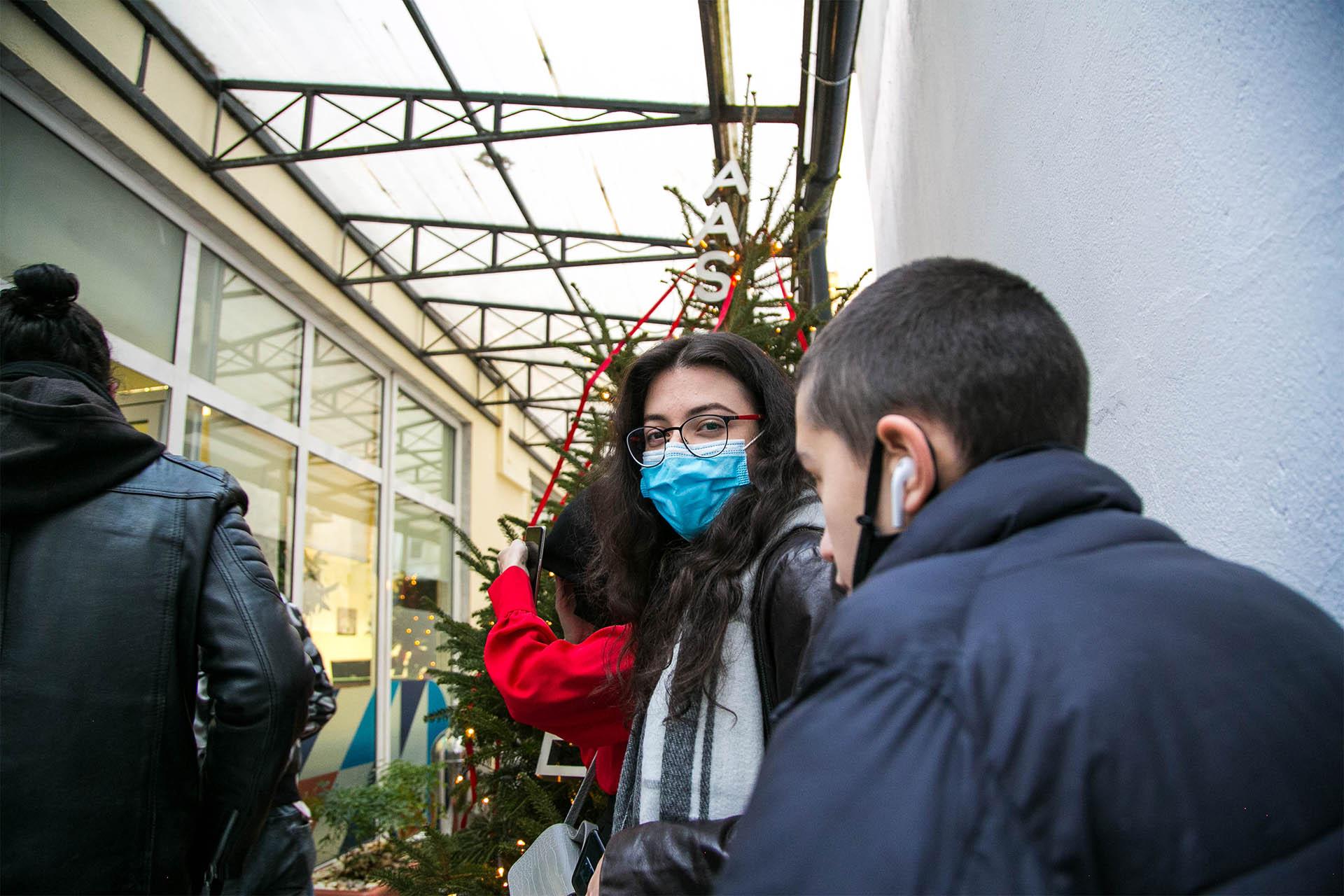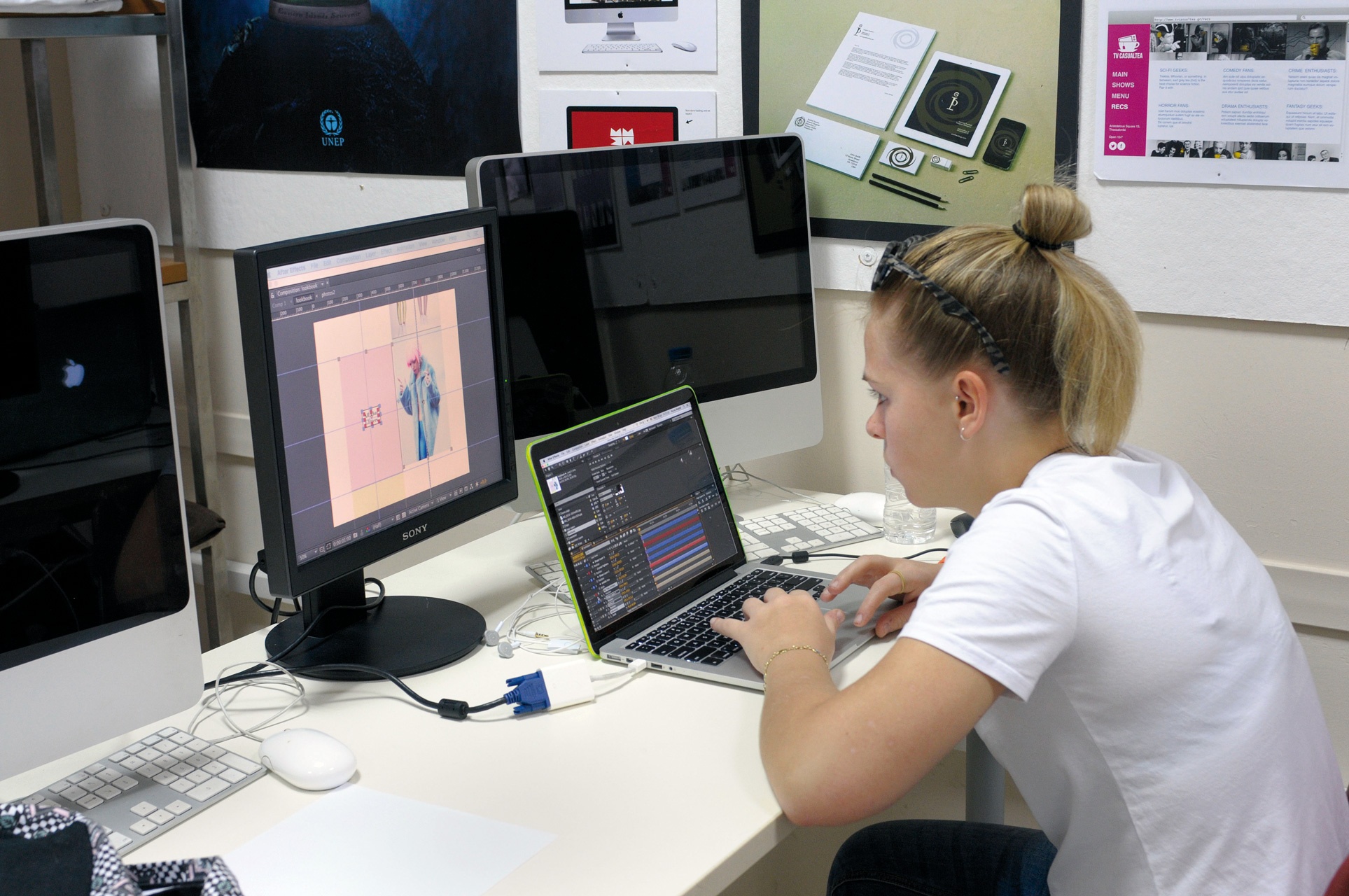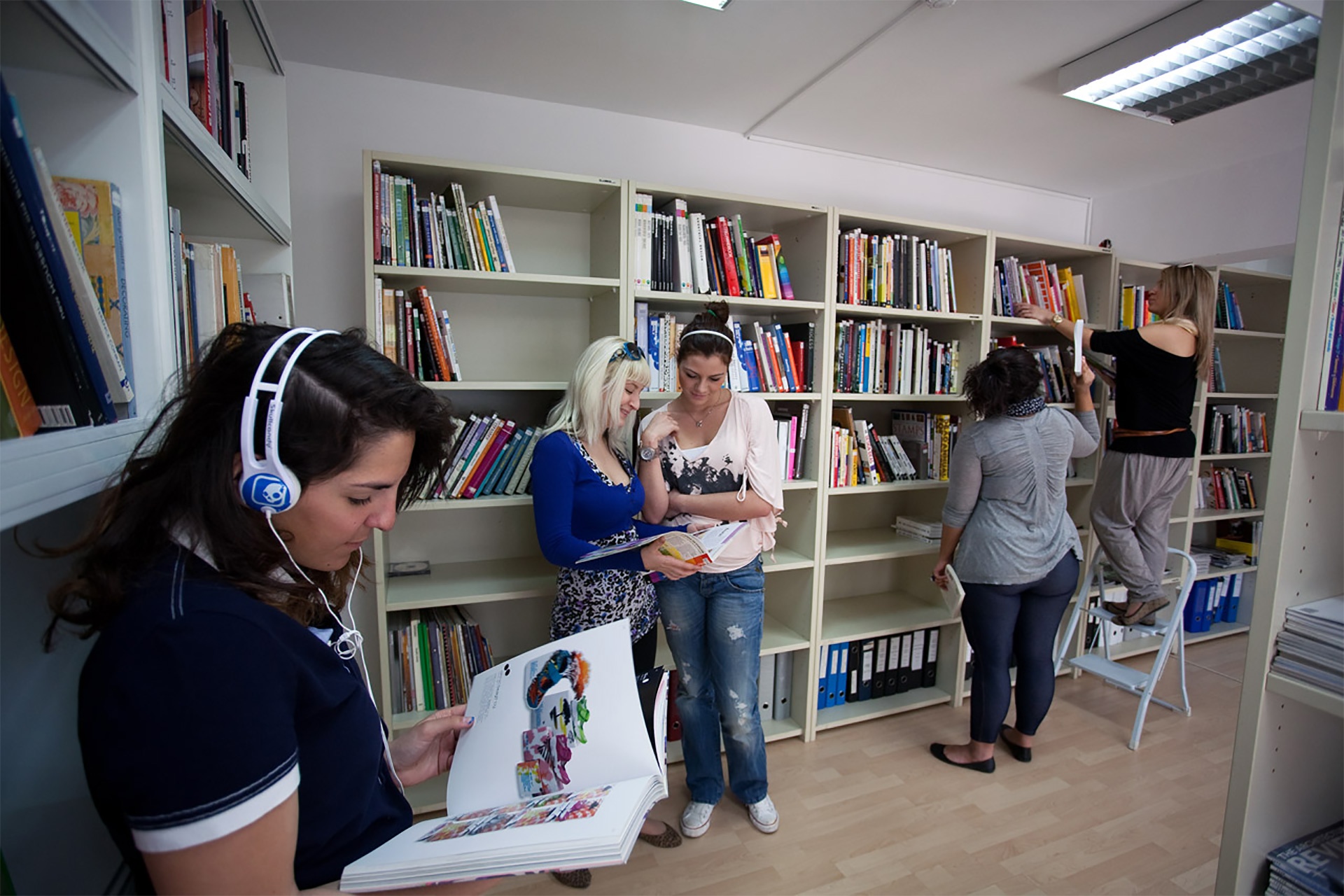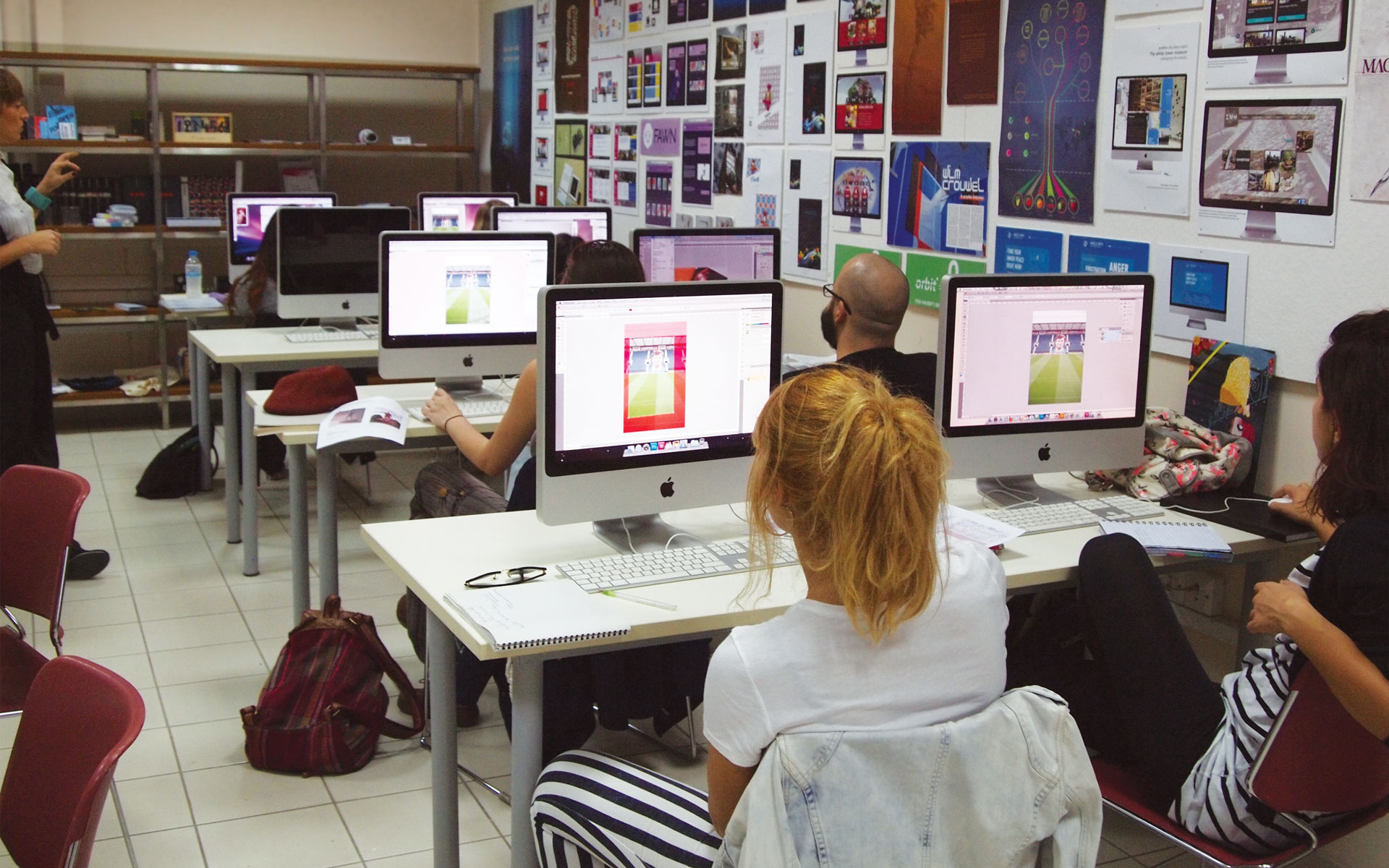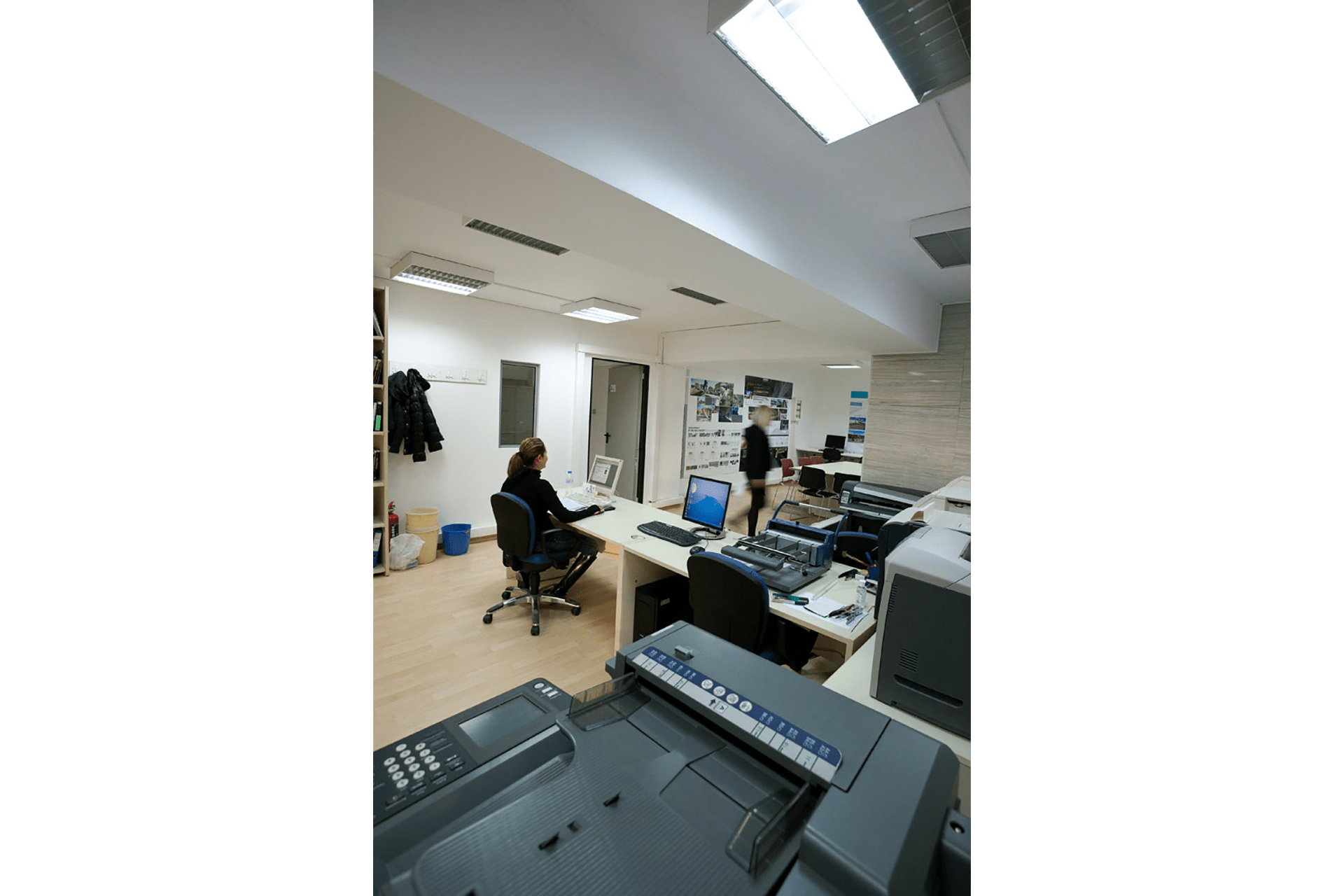AAS College Thessaloniki
School of Art & Design
COURSES | BACHELOR
BA (Hons) Graphic Design
«The Graphic Designer experiences, perceives, analyses, organises, symbolises and synthesises» – Paul Rand
BA (Hons) Graphic Design
Graphic Design is a discipline centred on the imaginative and versatile use of imagery, language, concepts, and creative problem-solving. Our approach encourages exploration across diverse areas, including advertising, art direction, illustration, branding, image creation, typography, and visual communication — within both traditional and digital frameworks, encompassing motion graphics and interactive design.
At the heart of the discipline lies critical thinking and the development of ideas. We place strong importance on research, design methodology, and professional practice. Through an analytical and reflective approach, students are encouraged to engage with contemporary design challenges, adapt to an ever-changing creative industry, and evolve into thoughtful, perceptive, and innovative designers.
This programme is designed to equip students with the specialist expertise and practical abilities required to embark on a professional career in Graphic Design. Students are expected to develop a comprehensive understanding of the complex and multifaceted nature of design practice, enabling them to respond creatively and intelligently to the demands of the profession and the broader cultural context.
Programme Aims
The course seeks to make a valuable contribution to the field of Graphic Design at local, national, and international levels through the education and development of its graduates. Its key aims are to:
Offer students opportunities to cultivate a broad and interdisciplinary awareness of the diverse and intricate issues shaping contemporary graphic design.
Encourage the acquisition of intellectual abilities necessary for addressing both theoretical and practical aspects of design.
Support the development of a comprehensive range of discipline-specific, practical, and transferable skills.
Provide opportunities for students to combine hands-on design practice with rigorous academic research and inquiry, fostering the ability to analyse and evaluate design problems effectively.
Encourage students to critically reflect on their own practice and to make meaningful, strategic contributions to current design discourse and professional practice.
Duration:
36 months (3 years)
Educational form:
Taught
Education Variants:
Fulltime
Language:
English
February’s intake:
Classes Start Date:
9 February 2026
October’s intake:
Classes Start Date:
5 October 2026
British Degree:
Bachelor Degree
STUDENT WORK
FACILITIES
AAS College is set in a modern, purpose – built university campus. Students learn in specially designed lecture rooms and theatre, laboratories, design studios and in flexible teaching spaces. Individual and group study spaces allow students to work alone or collaborate on projects. This course has dedicated graphics studios for workshops, group and independent working. They are equipped with projectors and screens and Macs or PCs or both. There are also campus digital media suites with software including: Adobe Creative Suite.
COURSE STRUCTURE (BA (Hons) Graphic Design)
Overview
In the first year of study, students are introduced to the fundamental principles, methods, and contexts of Graphic Design. They begin to explore the discipline as a creative and intellectual process that combines critical thinking, problem-solving, and visual communication. The focus is on developing an understanding of how typography, imagery, and layout interact to convey meaning across a range of media and formats, from print to motion and digital platforms.
Students engage with practical studio projects that emphasise experimentation, process, and making, while also encouraging awareness of design decisions and their visual impact. Through this, they begin to appreciate the importance of design as both a conceptual and technical discipline, learning to generate, develop, and communicate ideas effectively. An emphasis is placed on taking responsibility for personal learning, developing reflective practice, and understanding the value of iteration and critique as part of the design process.
Alongside practical work, students are introduced to key historical, theoretical, and contextual aspects of graphic design. They examine the wider social, cultural, political, and technological forces that shape design practice, while beginning to analyse the influential movements, figures, and ideas that have informed its evolution. Through written and visual research, students strengthen their ability to think critically and articulate insights about the discipline.
By the end of the first year, students will have developed a solid grounding in the essential creative, technical, and analytical skills required for further study. They will have begun to establish their own design identity, gained confidence in communicating visually and verbally, and understood the relevance of graphic design within a contemporary and global context.
Overview
In the second year, students consolidate and extend their creative, technical, and theoretical understanding of graphic design. The focus shifts towards more complex projects and professional contexts, encouraging students to apply their growing knowledge to a broader range of media, methods, and communication challenges. They begin to refine their personal approach to design, developing a stronger sense of direction and independence within their practice.
Through studio-based work, students explore both traditional and emerging techniques for print and digital platforms, deepening their understanding of processes, applications, and industry-standard terminology. Concept development becomes increasingly central, as students investigate how typography, imagery, motion, and interactivity can be used strategically to communicate ideas and engage audiences. Experimentation and critical reflection are key elements, enabling students to evaluate their creative decisions and develop a more mature and professional visual language.
Theoretical and contextual study supports this practical exploration by introducing students to key academic debates and discourses within graphic design, art direction, and visual communication. Through engagement with seminal and contemporary texts, students strengthen their analytical and research skills, gaining insight into how design operates within wider cultural, social, and professional frameworks.
Professional awareness is further developed through the study of real-world design practices and case studies. Students examine various career pathways — including studio-based practice, freelance work, entrepreneurship, and collective collaboration — learning about the expectations, ethics, and responsibilities of the contemporary designer.
By the end of Year 2, students will have enhanced their technical expertise, conceptual clarity, and understanding of professional practice. They will be prepared to take a more self-directed and critical approach to design in their final year, equipped with the knowledge and confidence to engage with both the academic and industry aspects of the discipline.
Overview
In the final year of study, students bring together the creative, conceptual, and technical skills developed throughout the programme to define and demonstrate their individual design identity. The focus is on independent learning, critical reflection, and professional preparation, culminating in a body of work that reflects their readiness for employment or postgraduate study.
The year centres on self-directed major projects, in which students are encouraged to explore personal interests, experiment with new ideas, and engage with complex design challenges. Through the development of a professional portfolio, students integrate intellectual rigour with practical execution, producing innovative and conceptually sound work that aligns with global standards. Participation in international competitions and design schemes offers opportunities for benchmarking against professional practice and for situating their work within a wider creative and cultural context.
Professional development runs alongside this creative practice, with emphasis on personal reflection, self-evaluation, and design advocacy. Students learn to communicate their ideas and identity effectively through exhibition design, presentation, and portfolio preparation, gaining the skills needed to position themselves confidently within the creative industries.
The Graphic Design Dissertation complements studio work by deepening students’ theoretical and contextual understanding of the discipline. Through independent research, analysis, and writing, students engage with key debates and methodologies that underpin contemporary graphic design, developing academic confidence and intellectual independence.
By the end of the final year, students will have achieved a sophisticated integration of theory and practice, producing a professional portfolio that demonstrates originality, conceptual depth, and technical excellence. They will graduate as confident, articulate, and adaptable designers, prepared to contribute creatively and critically to the evolving global design landscape.
ASSESSMENT
Assessment is 100% coursework and you will be continually assessed throughout the course.
Assessment will be through assignments including design briefs (project work), competitions, presentations, seminars and group activities.
CAREER OPPORTUNITIES & JOB ROLES
We have an excellent employment record with previous graduates working for some of the Greece’s top Graphic Design agencies while others have established their own creative design companies. Many graduates have successful careers within the wide area of Graphic Design, from advertising agencies to multi-disciplinary design groups. Other career opportunities exist within general design consultancies, in-house design studios, printing, education or freelance work. Our students also successfully progress onto MA Degrees.
Job roles
With this Degree you could become:
- Graphic Designer
- Digital Designer
- Art Director
- Brand Designer
- Illustrator
- Brand Director
ENTRY REQUIREMENTS
Diploma and transcript from your high school
Evidence of your ability in English language
Portfolio
Passport
AAS Application Form completed
Discover our Prospectus→
Find out what makes AAS a great place to study
Book a Meeting→
Schedule an online meeting to learn more about us and our programmes.
Apply to AAS→
Accepting applications for Fall and Summer terms.
HOW TO APPLY
You should apply direct to the AAS College. We accept applications throughout the year, but advise you to apply early. We would like to receive application forms before 30th of June.
All candidates are required to submit the following documents:
1. A Fully Completed Application
AAS Application Form completed
A scanned copy of your passport
2. English language certificate
Certified Photocopy of English Language qualification(s).
Undergraduate applicants must have a fluent command of the English language which can be proven via the following examinations:
IELTS: 6,0 or other equivalent qualifications.
Candidates who have not acquired an English language qualification at the time of the submission of their application form are required to submit it at least one month before the commencement of the course.
3. Diploma of previous education
International Baccalaureate (IB) Diploma or six IB Subject Certificates, or A Levels obtained locally
Certified Photocopy of the Diploma of Secondary Education (High School Diploma 12 years of study), along with the final year’s academic transcript
Candidates who have not yet graduated from high school at the time of application, should submit the available academic transcripts from their current year of study, as well as a full transcript from the previous year of study
If the High School Diploma is produced in another language it should be translated and verified in English
4. Portfolio
You can send us approximately 20 examples of your work with a short written commentary. Most of this work
can be in the form of photographs on a PDF file. It is helpful for us to see examples of your original
drawings too.
The submission of a Design portfolio is mandatory to the Design programmes.
Application’s Submittion:
There is no application fee. You should submit your documents direct to the AAS College website following the link: https://aas.gr/aas-college-apply-now/
Our response:
A member of our staff will contact you in 48 hours.
Apply to AAS→
Accepting applications for Fall and Summer terms.
Lorem ipsum dolor sit amet, consectetur adipiscing elit. Ut elit tellus, luctus nec ullamcorper mattis, pulvinar dapibus leo.
